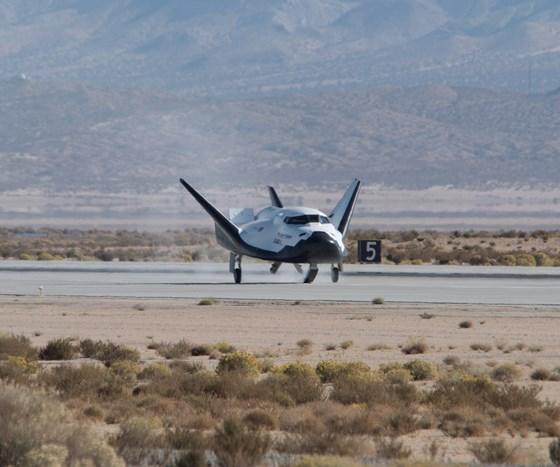Dream Chaser inches closer to first flight in the run-up to servicing the International Space Station, starting in 2020.
Sierra Nevada Corp. (Sparks, NV, US) reported on Nov. 13 that it has completed a successful atmospheric free-flight test of its composites-intensive Dream Chaser spacecraft, signaling the program is another achievement closer to orbital operations.
The full-scale Dream Chaser test vehicle was lifted from a Columbia Helicopters Model 234 UT Chinook helicopter on Saturday, released and flew a preplanned flight path ending with an autonomous landing on Runway 22L at Edwards Air Force Base, CA, US.
“The Dream Chaser flight test demonstrated excellent performance of the spacecraft’s aerodynamic design and the data shows that we are firmly on the path for safe, reliable orbital flight,” says Mark Sirangelo, corporate vice president of SNC’s Space System business area.
The first orbital vehicle is scheduled to go to the International Space Station as soon as 2020 for at least six missions as part of NASA’s Commercial Resupply Services 2 contract (CRS2). The missions will supply astronauts with much-needed supplies and technical support elements and enable the return of scientific experiments. The test vehicle was originally developed under the Commercial Crew Integrated Capabilities agreement (CCiCap).
“The Dream Chaser spacecraft today has proven its atmospheric flight performance along with its return and landing capability. This advances our program and the Dream Chaser towards orbital flight, while meeting the final milestone for our NASA CCiCap agreement and supporting milestone 5 of the CRS2 contract,” Sirangelo adds.
The test verified and validated the performance of the Dream Chaser spacecraft in the final approach and landing phase of flight, modeling a successful return from the space station. Most critically, by flying the same flight path that would be used returning from orbit, this free flight proves the highly important landing attributes needed to bring back science and experiments from the space station.
